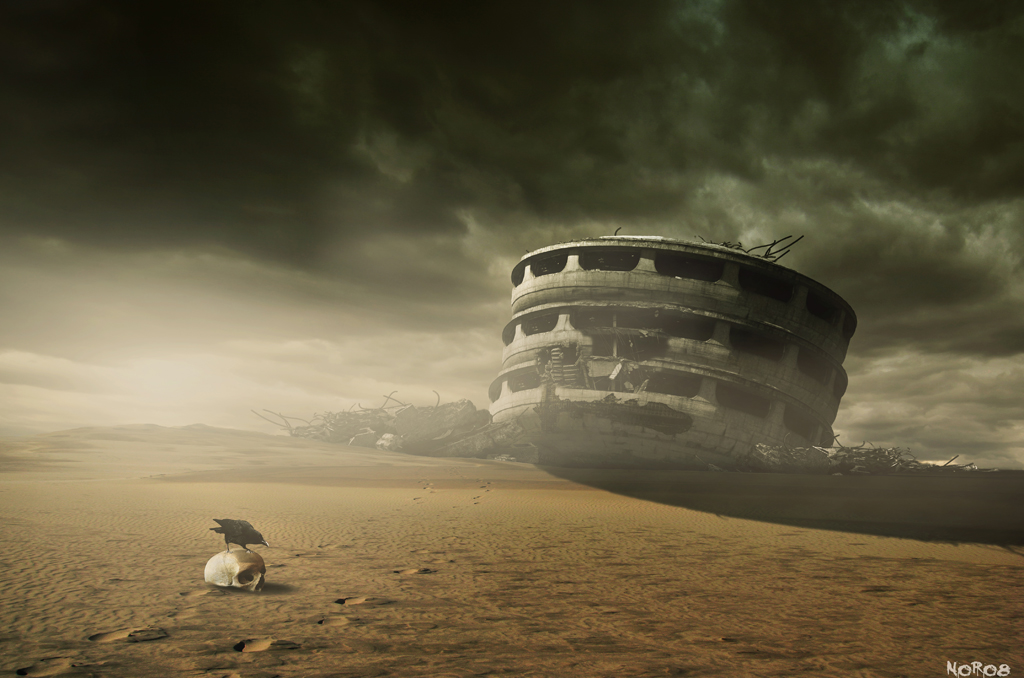A Hundred Millennia From Now
Jun. 3rd, 2023 10:57 pm I need a little help from my readers for a fiction project in the early conceptual changes.
I need a little help from my readers for a fiction project in the early conceptual changes. I'm trying to find accurate information about the enduring legacies of modern industrial civilization. Assume that our civilization circles through the normal cycle of decline and fall. Assume that ordinary history continues for the next hundred thousand years or so. Assume that ordinary ecological and climatic cycles, perturbed by our current mess, return to normal in a reasonable period of time and persist for that same very long period. What traces will remain of the earth's first global technic civilization?
What I would like, if any of my readers can point me to this, are some easily accessible written sources by geologists and other people literate in the earth sciences which address this. Yes, I'm beginning to draft a story set in the far future; no, it's not going to be the fake future of so much bad science fiction, in which today's mental and cultural habits remain frozen in place across the ages while technotrinkets lurch into ever more elaborately predictable forms. We never went to the stars, nor did alien space bats ever come to visit us; life has continued to evolve; today's industrial society, the legendary First Technate, is a dim presence long since fallen out of mythology, and recalled only in fragmentary surviving records from less prodigiously ancient societies.
Oh, and there's a new ice age on, though the glaciers are slowly beginning to retreat. Fun times!
If any of you have scientifically based sources to suggest for the long-term destinies of our mines and freeways, dams and tunnels, landfills and miscellaneous waste, I'm all ears.
(no subject)
Date: 2023-06-04 06:51 am (UTC)Glass and ceramics will be chemically stable, but they will erode if exposed, buried they would be fine. We believe that some plastics will last that long, again buried because they photodegrade. Aluminum too, if it is protected from abrasion.
So, regardless of the weather, large cities south of the glaciers will have bits of broken glass and ceramics in the soil, beer bottles, coffee cups, floor tiles, window glass, etc. There will probably be some aluminum cans, aluminum siding, and aluminum car and airplane parts. Landfills will likely have some hard plastics left.
Some precious metals like gold and platinum will be fine. Man made diamonds too, but I doubt anyone will go to the trouble of separating natural diamonds from artificial ones.
Also, there are some special places in the world that preserve some materials. Peat bogs and the bottom of the Black Sea preserves organic matter but not metals. Several cave systems have odd and geologically stable chemistry that will destroy somethings and preserve others.
(no subject)
Date: 2023-06-04 06:32 pm (UTC)(no subject)
Date: 2023-06-04 08:43 pm (UTC)https://www.sciencedirect.com/science/article/abs/pii/S0022311510005040
Archaeological analogs and the future of nuclear waste glass
The nuclear waste problem has generated a lot of research. Fusing the waste into glass is a promising avenue because glass is chemically inert and lasts a long time. Obsidian and Libyan desert glass (~29 million years old) show us just how long.
https://en.m.wikipedia.org/wiki/Libyan_desert_glass
Ceramics are a little trickier, but the Venus of Dolní Věstonice is 28,000 years old and Jomon pottery is 16,000 years old and both are in fine shape.
Plastics and aluminum are almost purely speculation because they haven't been around long enough to really know, with the possible exception of 3rd century Chinese aluminum artifacts:
Aluminium Objects from a Jin Dynasty Tomb–Can They Be Authentic?
Anthony R Butler, Christopher Glidewell, Sharee E Pritchard
It's disputed mostly because no one knows how they would have made aluminum in the 3rd century. (Standard we only managed it recently, therefore they couldn't have done it at all)
But pure aluminum oxidizes rapidly and aluminum oxide, also known as sapphire, which is insoluble, is very durable, and is known to last a very long time.
Plastics? I've seen from 500 years to forever. Some biodegrade, some photodegrade, and some we just don't know.
Unofficial, unsourced list of how long things last: https://stacker.com/environment/how-long-it-takes-50-common-items-decompose
(no subject)
Date: 2023-06-05 04:25 am (UTC)